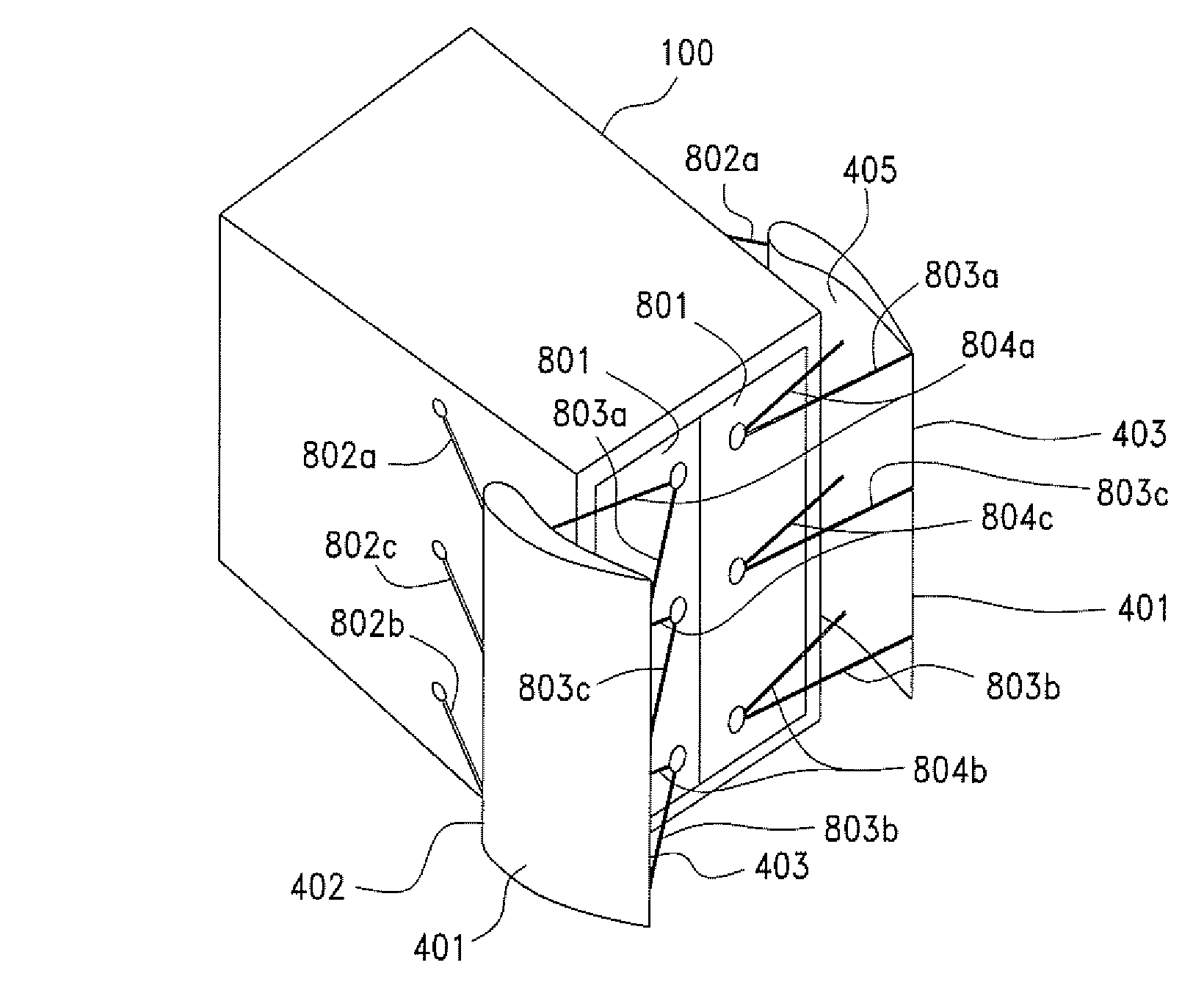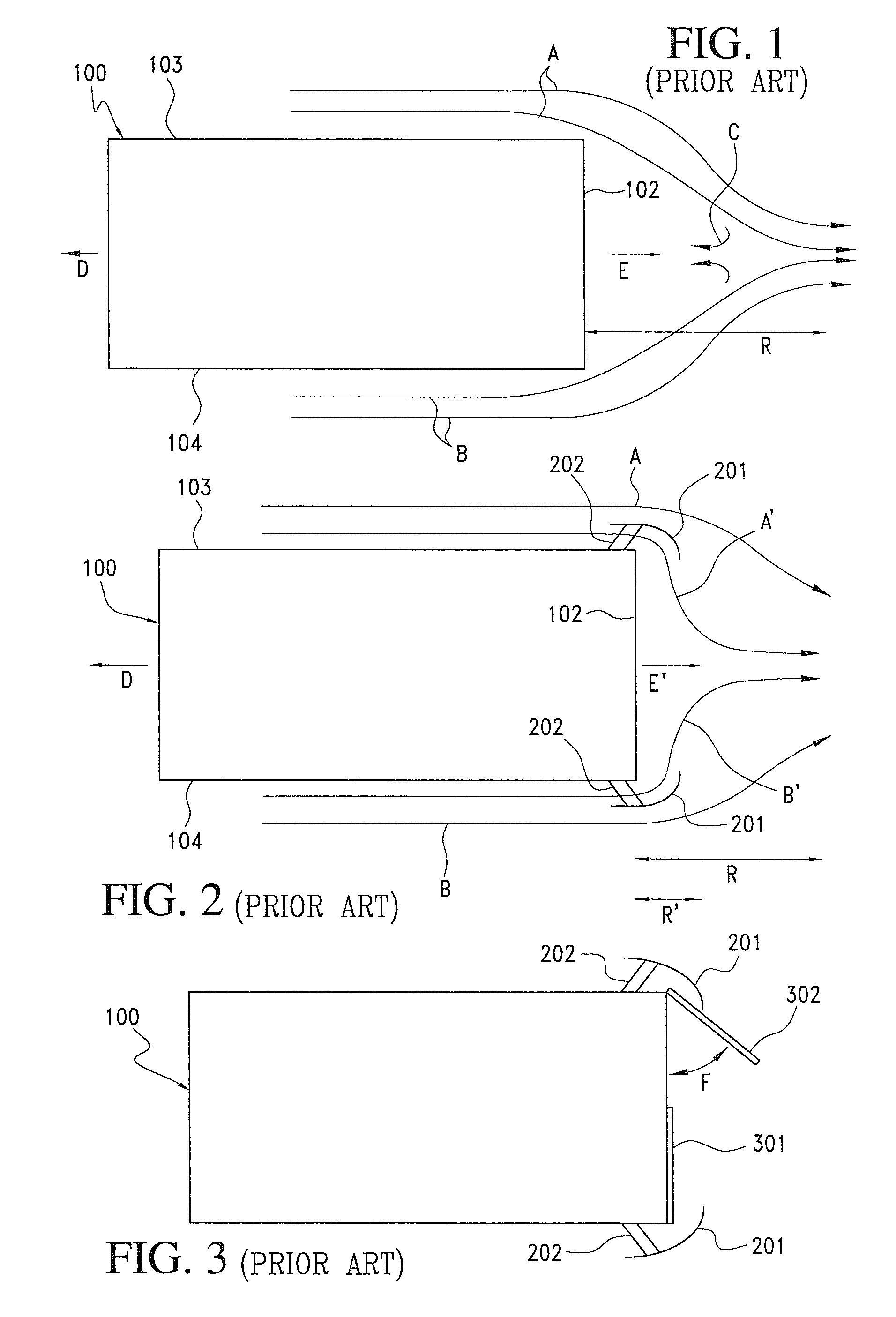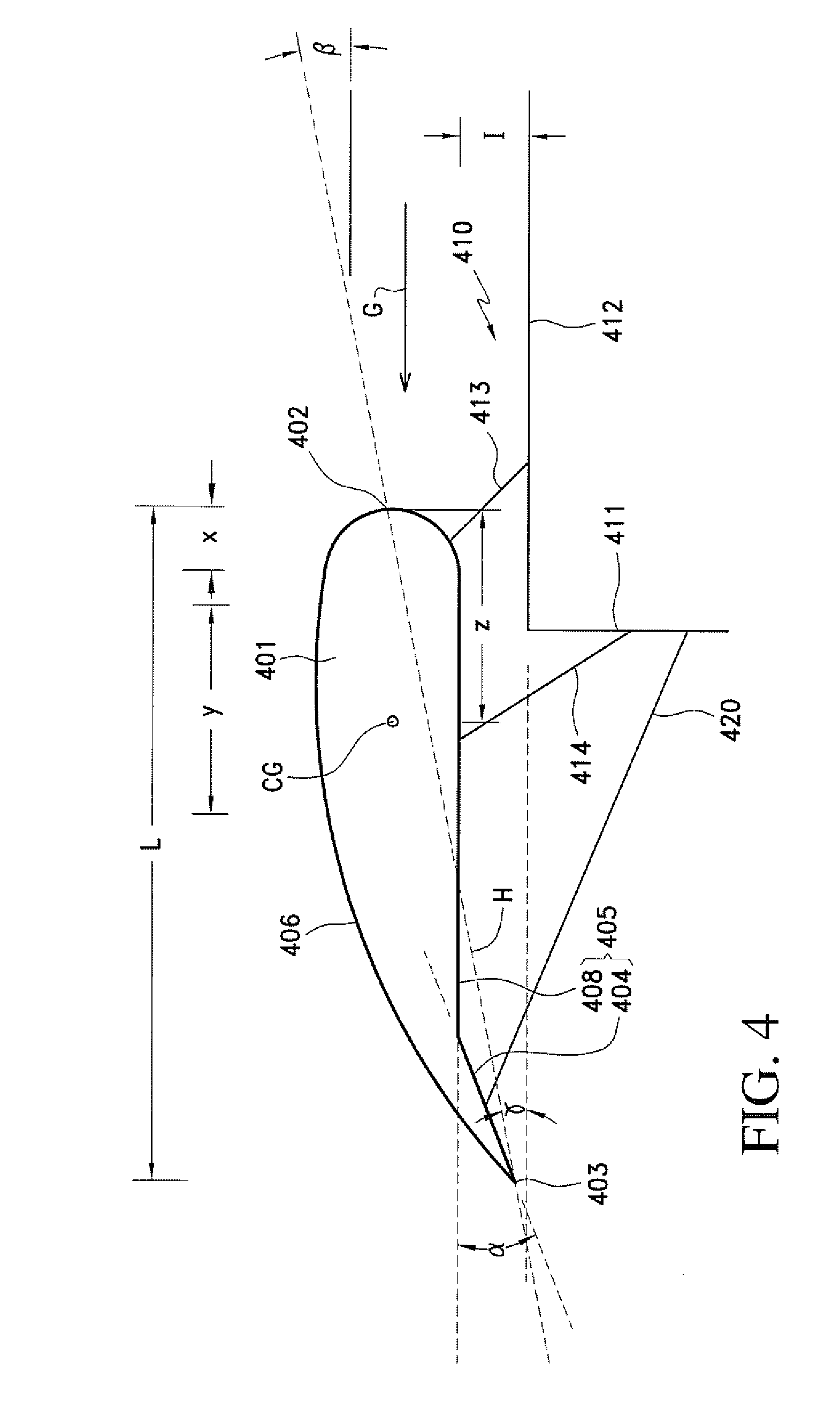Apparatus for reducing drag on vehicles with planar rear surfaces
a rear surface and apparatus technology, applied in the direction of roofs, vehicle arrangements, transportation and packaging, etc., can solve the problems of reducing fuel economy, requiring a sizable replacement cost, and devices with certain drawbacks, and achieve the effect of convenient opening
- Summary
- Abstract
- Description
- Claims
- Application Information
AI Technical Summary
Benefits of technology
Problems solved by technology
Method used
Image
Examples
Embodiment Construction
[0036]The term “aerodynamic center,” as used in this disclosure, may be defined as, but is not limited to, the point at which the pitching moment coefficient for the vane does not vary with lift coefficient. For symmetric vanes moving through an airflow, the aerodynamic center of the vane is located approximately 25% of the length of the chordline of the vane from the leading edge of the vane (the quarter-chord point). The chordline extends from the leading edge of the airfoil to the trailing edge of the vane. For non-symmetric (cambered) vanes, the quarter-chord is only an approximation for the aerodynamic center.
[0037]FIG. 1 shows a prior art airflow around a vehicle 100, such as a trailer, having a generally planar rear surface 102, a right side 103, and a left side 104, when vehicle 100 moves in a forward direction D at a desired speed. Under these conditions, air moves, relative to vehicle 100, along the sides 103 and 104 in the direction of arrows A and B, respectively. The fl...
PUM
 Login to View More
Login to View More Abstract
Description
Claims
Application Information
 Login to View More
Login to View More - R&D
- Intellectual Property
- Life Sciences
- Materials
- Tech Scout
- Unparalleled Data Quality
- Higher Quality Content
- 60% Fewer Hallucinations
Browse by: Latest US Patents, China's latest patents, Technical Efficacy Thesaurus, Application Domain, Technology Topic, Popular Technical Reports.
© 2025 PatSnap. All rights reserved.Legal|Privacy policy|Modern Slavery Act Transparency Statement|Sitemap|About US| Contact US: help@patsnap.com



